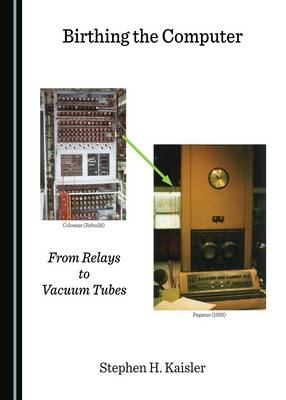Birthing the Computer: From Relays to Vacuum Tubes is the first in a multi-volume series on historical computing machines. This series will span the development of computer systems from the Zuse machines of the early 1930s to about 1995 when microprocessors began to be commoditized. Each volume will focus on a range of technologies, or a class of machines or a particular vendor, and will describe the hardware of the machines and its peripherals, the operating system and system software, and its influence upon programming languages. This volume begins with the Zuse machines which were constructed from relays, but contained the basic elements of a computer system, namely input, computing engine, and output. Early machines from Atanasoff and Berry, Aiken, Stibitz, and IBM are described. The transition from relays to vacuum tubes increased speed and performance significantly, and led to the first true computers in ENIAC, EDSAC, and EDVAC which used paper tape and Williams tubes for I/O and storage. These machines were built by universities.Several early machines were purpose built such as Colossus and BINAC, and created with government support and industrial know-how. By the mid-to-late ‘50s, computing machines were being built by universities (the SSEM, Whirlwind, and IAS machines), governments (the NBS SEAC and SWAC, and several other machines), and industry (the UNIVAC series and the English Electric DEUCE). Most of these machines were constructed using the von Neumann architecture, and represent an evolution of thinking in how computing machines were to operate along with some innovative ideas in software and programming languages. By the end of the 1950s, the design, development, programming and use of computing machines were in full ferment as many new ideas were proposed, many different machines were designed and some were constructed. Computing machines became a commercial enterprise. Governments receded from building machines to levying requirements and funding construction, while universities continued to explore new architectures, new operating systems, and new programming languages.
Stephen H. Kaisler, DSc, is a Research Scientist based in Columbia, Maryland, USA, and has worked for a number of small businesses in the Washington Metro Area in the areas of defense and intelligence. He has also worked as a Program Manager in Strategic Computing at the Defense Advanced Research Projects Agency and as Technical Advisor to the US Senate Sergeant at Arms. Dr Kaisler has previously written five books on operating systems, database systems, the Interlisp programming language, software paradigms, and big data, and has published over 40 technical papers and numerous technical reports. Dr Kaisler is currently an Adjunct Professor of Engineering in the Department of Computer Science at George Washington University, USA, and has taught enterprise architecture and information security for seven years at the Business School of the same university. He is a Life Member of the IEEE Computer Society, and received a BS in Physics and MS in Computer Science from the University of Maryland, and a DSc in Computer Science from George Washington University.



